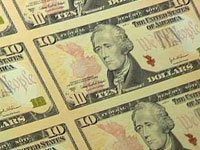Russian Perspective on the Rise of the US Dollar
It’s all falling apart. The world fears the global financial system is on the verge of collapse and a long drawn out recession could be in our future. It’s going to be a long one and the commodity bull has been stopped in its tracks.

Oil, coal, uranium, copper, nickel, and other base metals are steadily declining in price almost every day. It seems like there is almost no let up in the selling at times.
The sell-off has wreaked havoc on the shares of mining companies. All of the majors across the board have dropped anywhere between 50% and 70%. It’s been a tough couple of months for mining companies.
Of course, they expect the volatility. They’re used to the cyclicality of the industry. Mining stocks have been subject to huge swings for decades. The executives, engineers, geologists, and laborers are used to it. Frankly, it’s not about to change anytime soon. Imagine an entire country whose economic success was dependent on high commodity prices? How would it react?
Well…the world has one and it’s not reacting well.
Russia has taken the commodities sell-off on the chin. The Russian ruble has fallen 10% since its highs against the U.S. dollar in July.
The Russian stock market, as tracked by Market Vectors RSX ETF, has fallen 62% this year. The Russian stock market has been halted twice in the past month in hopes of stopping the sell-off (it didn’t even open on Friday). The Russian Stock Exchange has also outlawed short-selling. And the Russian government has authorized the purchase of $20 billion worth of shares.
Friday, Russian President Dmitry Medvedev rolled out Russia’s banking bailout plan. Russia’s plan involves pumping $36 billion dollars into the local banking system in the form of five year loans. On a comparative basis, this cash infusion is about 3.5% of Russia’s GDP while the U.S. plan is about 5.6% of GDP.
Clearly, Russia’s got some problems. But Russia is no stranger to problems. Just 10 years ago, the country’s financial system collapsed when the government defaulted on its debt. The default sent the Russian economy into a tailspin and was the straw that broke the camel’s back of Long-Term Capital Management.
At the time, the Russian economy was a total wreck. 80% of Russia’s exports were timber, oil, natural gas, and metals and commodities prices were sliding (like they are now). Russia was not prepared.
Hundreds of banks closed and people were lined up at banks for days to try to withdraw some virtually worthless rubles. No one could deny it was a true financial crisis.
It took a decade, but Russia eventually recovered. This time many are not about to make the same mistakes. Much like the Argentineans we met the other day, who experienced their own financial crisis when Argentina’s banking system collapsed completely in 2001, Russians still don’t trust their banks. And they trust the government and ruble even less.
Click here to read the full text of the article
Subscribe to Pravda.Ru Telegram channel, Facebook, RSS!



